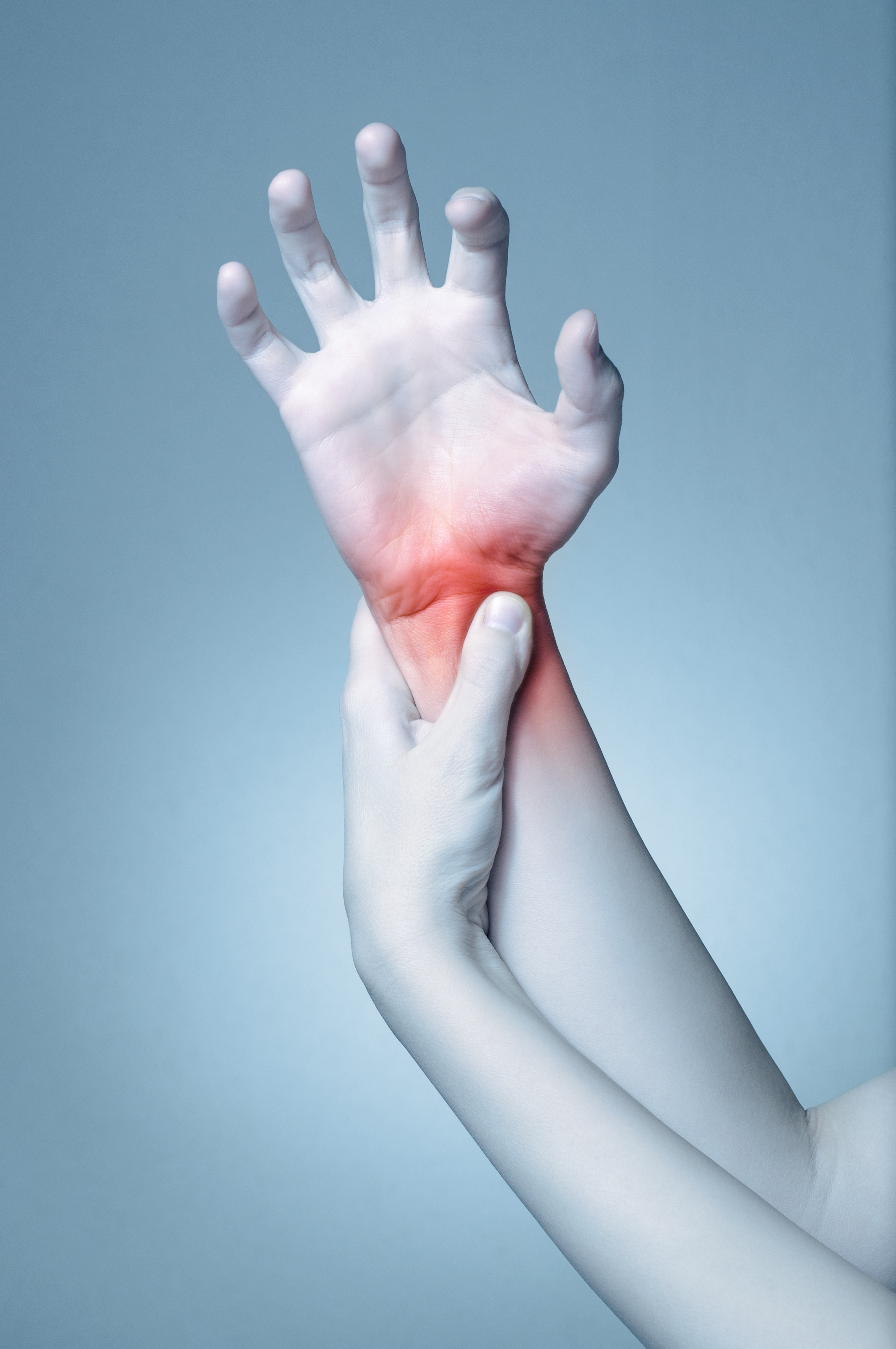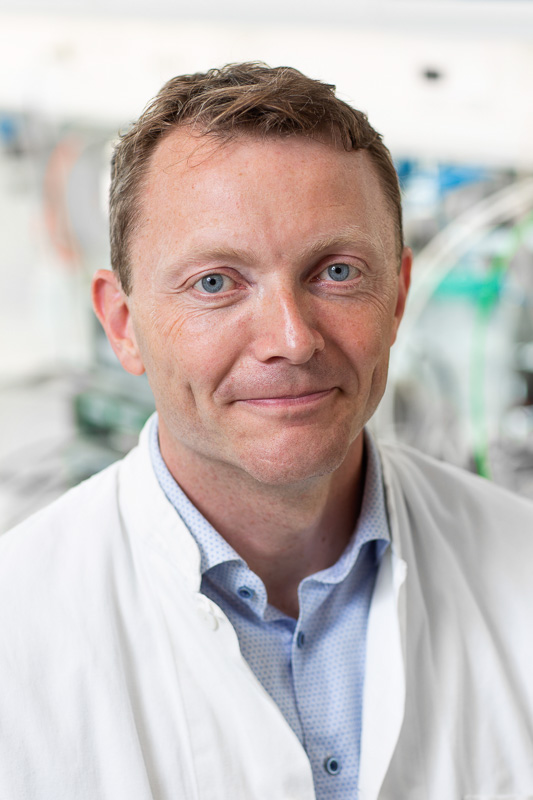One step closer to chronic pain relief
While effective drugs against chronic pain are not just around the corner, researchers from Aarhus University have succeeded in identifying a protein as a future potential target for medicinal drugs. Basic research shows that blocking a protein named sortilin prevents pain – initially in laboratory mice.



Sortilin, which is a protein expressed on the surface of nerve cells, plays a crucial role in pain development in laboratory mice – and in all likelihood in humans as well. This is the main conclusion of the study ’Sortilin gates neurotensin and BDNF signalling to control peripheral neuropathic pain’, which has just been published in the journal Science Advances.
The results are based on a decade of basic research, and even though studies on mice have only been done so far, the study provides hope for the development of a medicine that can help people with pain induced by nerve injury – called neuropathic pain by medical professionals.
This pain may be triggered by an acute injury or a chronic disease such as e.g. diabetes in the pain pathways and is characterised by different sensations including burning, pricking, stinging, tingling, freezing or stabbing in a chronic and disabling way.
The patients have in common that they could fill a shopping basket with pain killers ranging from local anaesthetic ointments to morphine “without ever really getting any good results” as the primary author of the article, Assistant Professor Mette Richner, puts it. She is employed at the Department of Biomedicine and the DANDRITE research centre, both part of Aarhus University.
Sortilin puts the brakes on the pain brake
Mette Richner explains that chronic pain is triggered by overactive nerve cells, i.e. nerve cells where the regulation of their activity is not working properly. For this reason, it is necessary to gain knowledge of the changes happening at the molecular level to be able to 'nudge things into place again'.
"And it's here, at the molecular level, that we've now added a crucial piece to a larger puzzle," says Mette Richner, who explains that sortilin – and now things get a little convoluted - appears to 'put the brakes on the brake’ which, at the molecular level, stops the body's pain development.
“Once nerve damage has occurred, and the nerve cells go into overdrive, molecules are released which start a domino effect that ultimately triggers pain. The domino effect can be inhibited by a particular molecule in the spinal cord called neurotensin, and our studies show that the neurotensin is ‘captured’ by sortilin, so that the brake is itself inhibited,” explains Mette Richner, who began on the project as a PhD student in Professor Anders Nykjær’s group and subsequently completed it as a postdoc in Associate Professor’s Christian B. Vægter’s research group. Both are last authors of the study.
Does it work on people?
The research group's hope is that the pharmaceutical industry will continue to investigate whether it is possible to block sortilin locally in the spinal cord, so that the neurotensin can move freely and get the brake to function, thereby inhibiting the pain. In connection with this, Christian Vægter emphasises that there is obviously a way to go from mouse to human being.
"Our research is carried out on mice, but as some of the fundamental mechanisms are quite similar in humans and mice, it still gives an indication of what is happening in people suffering from chronic pain," says Christian Vægter.
The idea of studying the complicated pain-related puzzle in relation to the spinal cord arises from a decade’s worth of research into both pain and sortilin. The initial studies revolved around mice that lack the ability to form sortilin and were apparently pain-free despite nerve damage – and of course the studies were done in accordance with methods approved by the Danish Animal Experiments Inspectorate.
The research group could subsequently ascertain that neither did normal mice develop pain after nerve damage when the researchers blocked sortilin – and from here the hunt for the correlation began, before it was ultimately explained by the regulation of the pain inhibiting molecule neurotensin.
Cronic pain in brief
- Around eight percent of the population suffer from neuropathic pain, and the number of sufferers is expected to increase in step with longer life expectancy and more lifestyle diseases.
- It is triggered by chronic diseases such as e.g. diabetes and multiple sclerosis and affects around one third of people in these two groups of patients. Chronic pain frequently occurs following amputations and is seen in almost seven out of ten patients with brain and spinal cord injuries. Chronic pain also affects seven out of ten patients receiving chemotherapy.
- Chronic pain can occur in all parts of the body and is triggered by nerve damage. In principle, the cause could be a bicycle accident (deep wounds, serious blows), sports injuries, amputation, chemotherapy or autoimmune diseases.
- Chronic pain is defined by pain which has failed to disappear three months after the wound has healed.
The research results – more information
- Animal experiments (on mice) were used with the mice being subjected to nerve damage, sensory tests and the testing of drugs. The molecular biological techniques employed were protein and tissue analyses.
- One of the most important partners is Professor Yves De Koninck, Université Laval, Canada, together with H. Lundbeck.
- The Lundbeck Foundation, the Independent Research Fund Denmark, an EU FP7 grant and the Danish National Research Foundation have all contributed to the financing of the study.
- Direct link to the scientific article on which the media coverage is based: https://advances.sciencemag.org/content/5/6/eaav9946
Contact
PhD & Assistant Professor Mette Richner
Department of Biomedicine, Health and the DANDRITE research centre, both Aarhus University
Email: mette.richner@biomed.au.dk
Mobile: (+45) 3022 6901
Associate Professor Christian VægterDepartment of Biomedicine, Health and the DANDRITE research centre, both Aarhus University
Email: cv@biomed.au.dk
Mobile: (+45) 6130 3642
Professor Anders Nykjær
Department of Biomedicine, Health and the PROMEMO and DANDRITE the research centres, all Aarhus University
Email: an@biomed.au.dk
Mobile: (+45) 2899 2384
